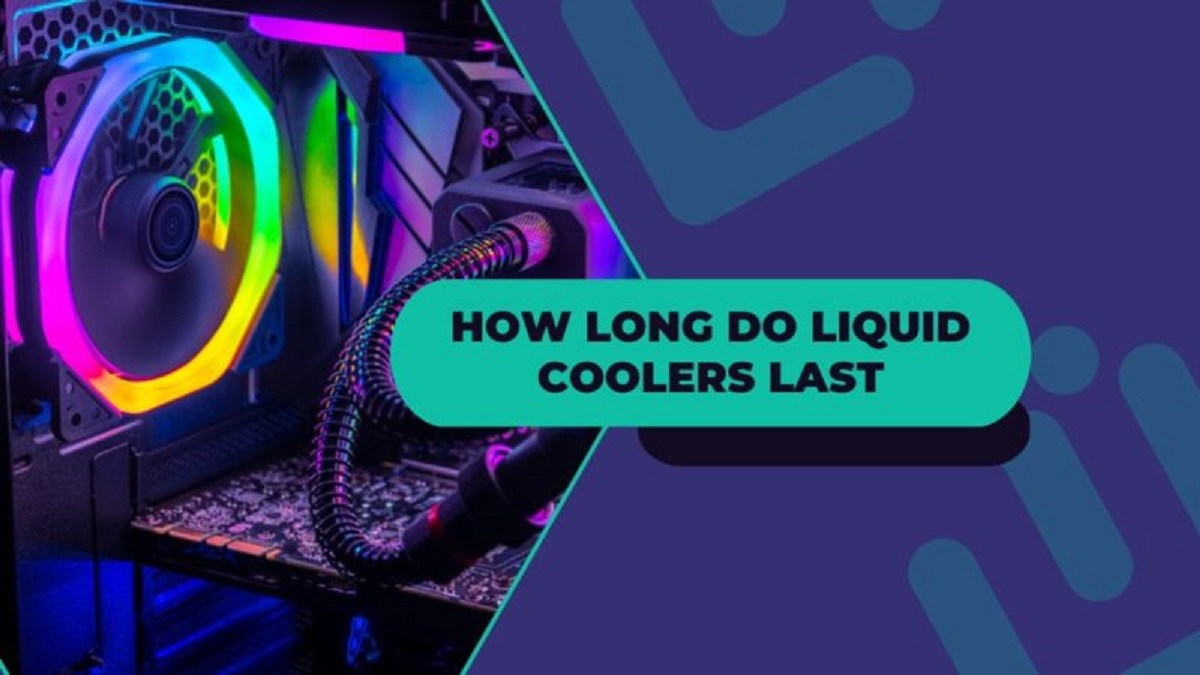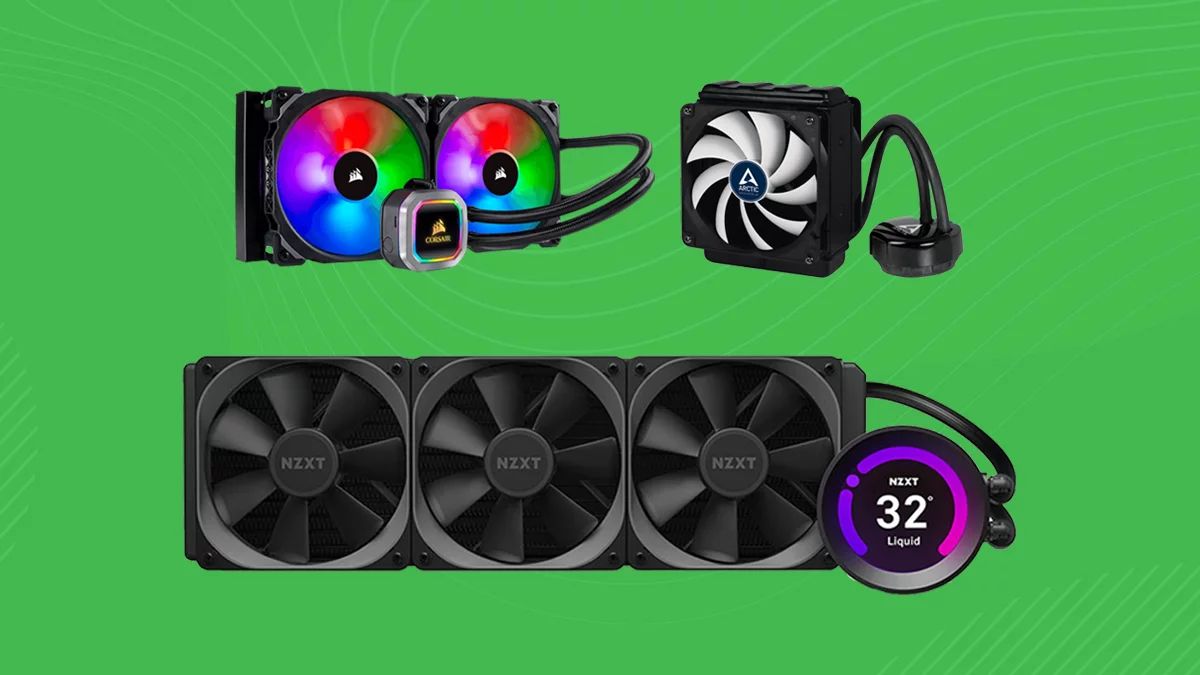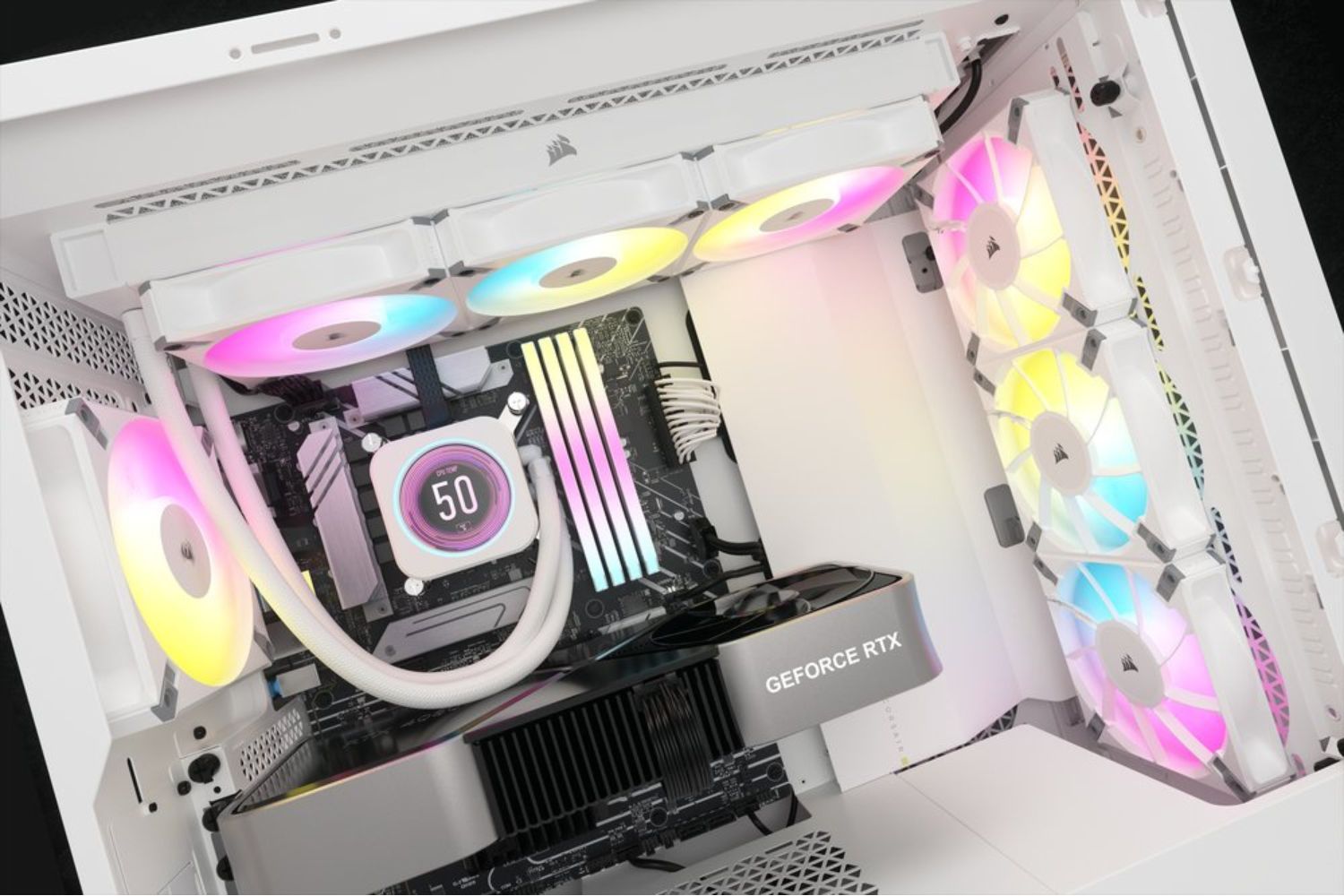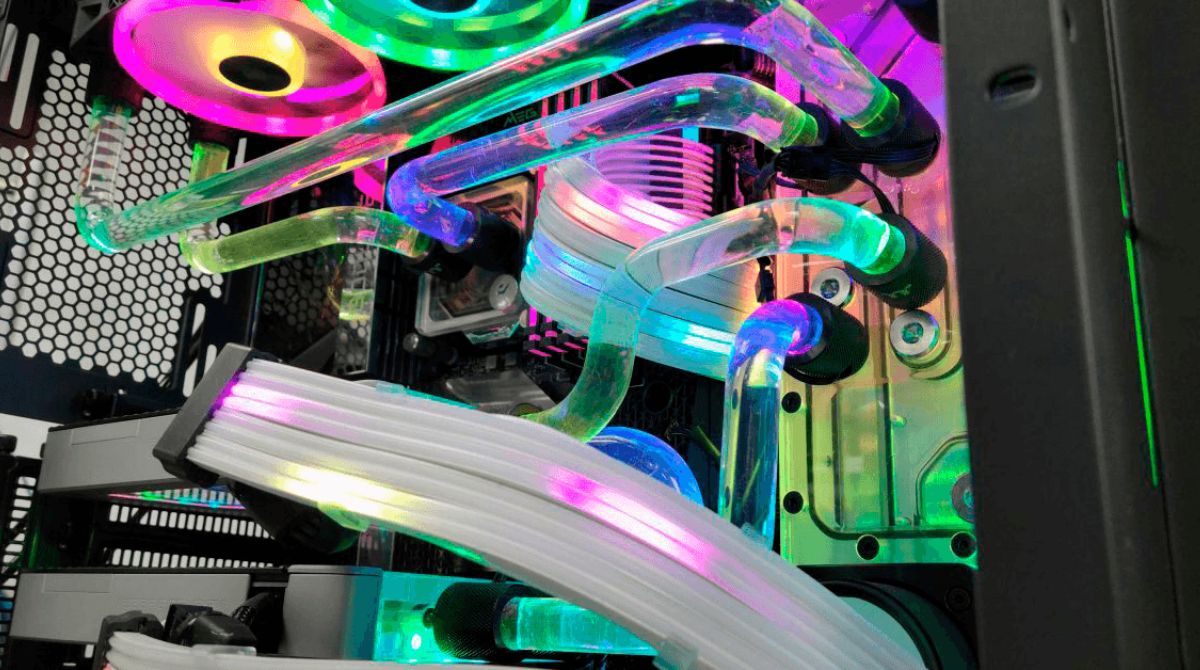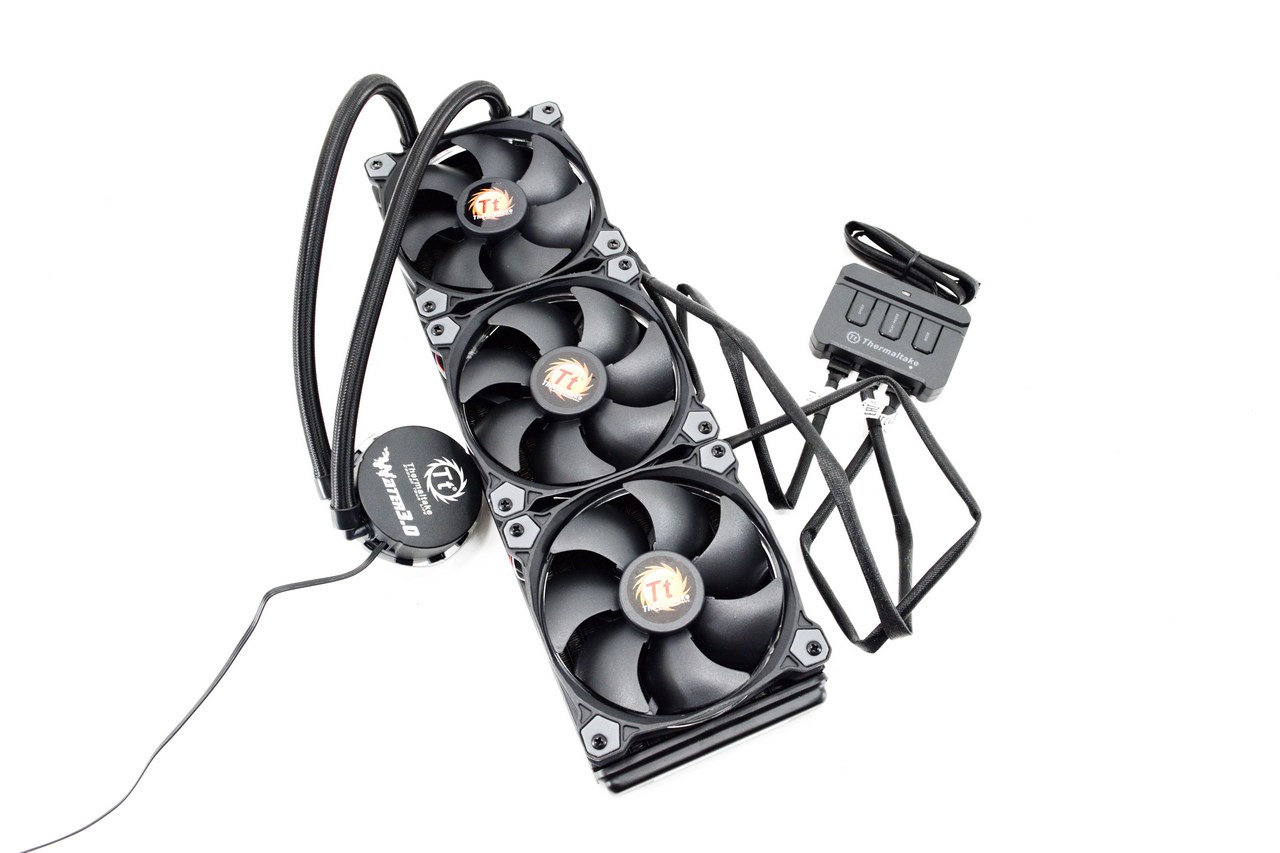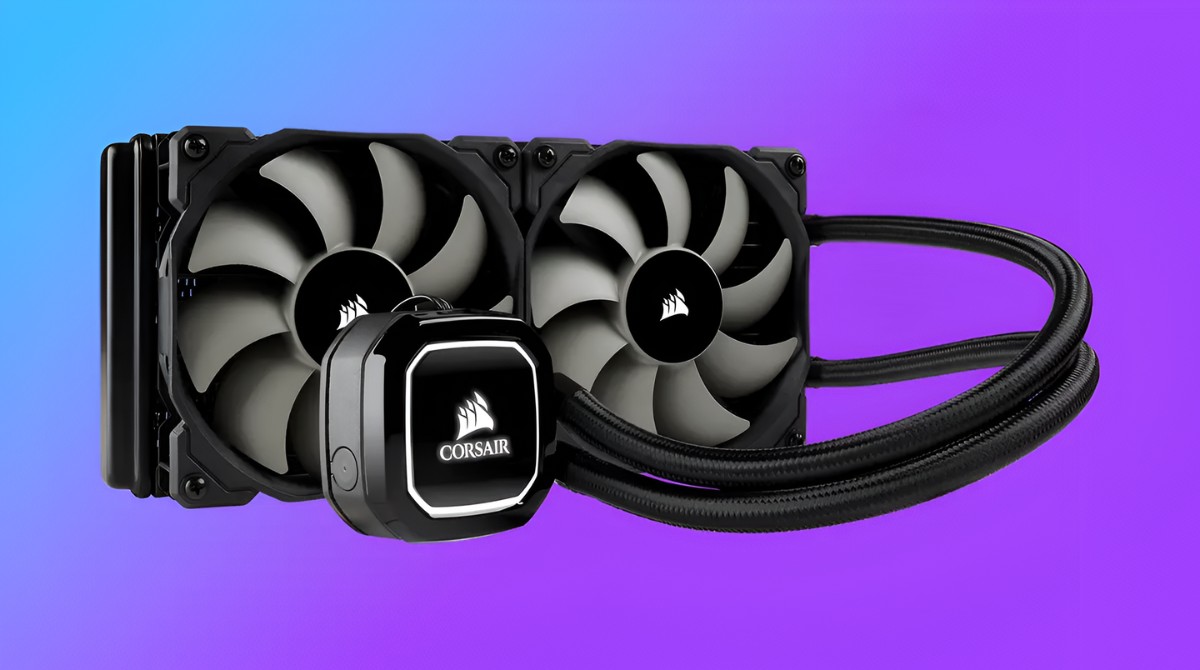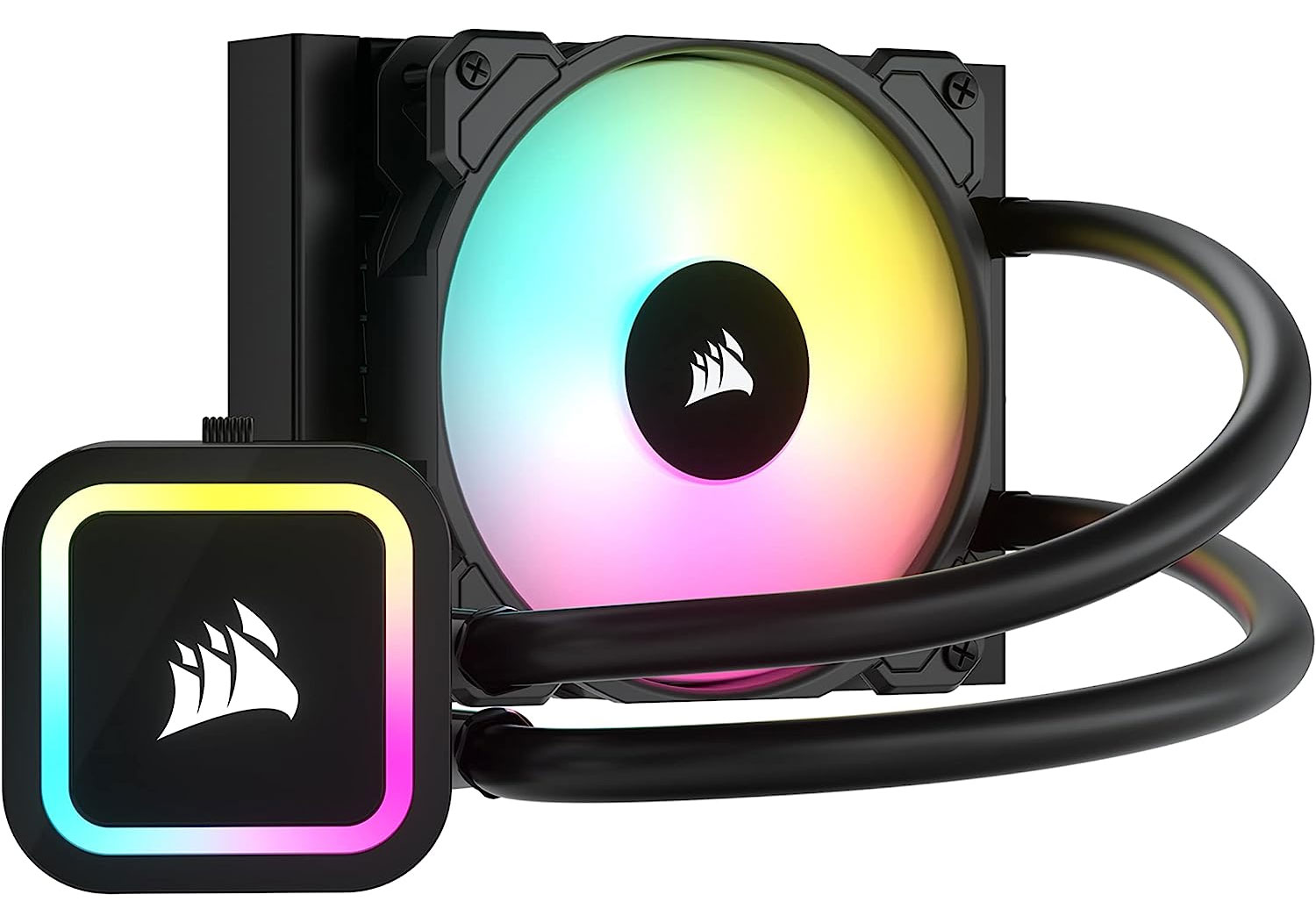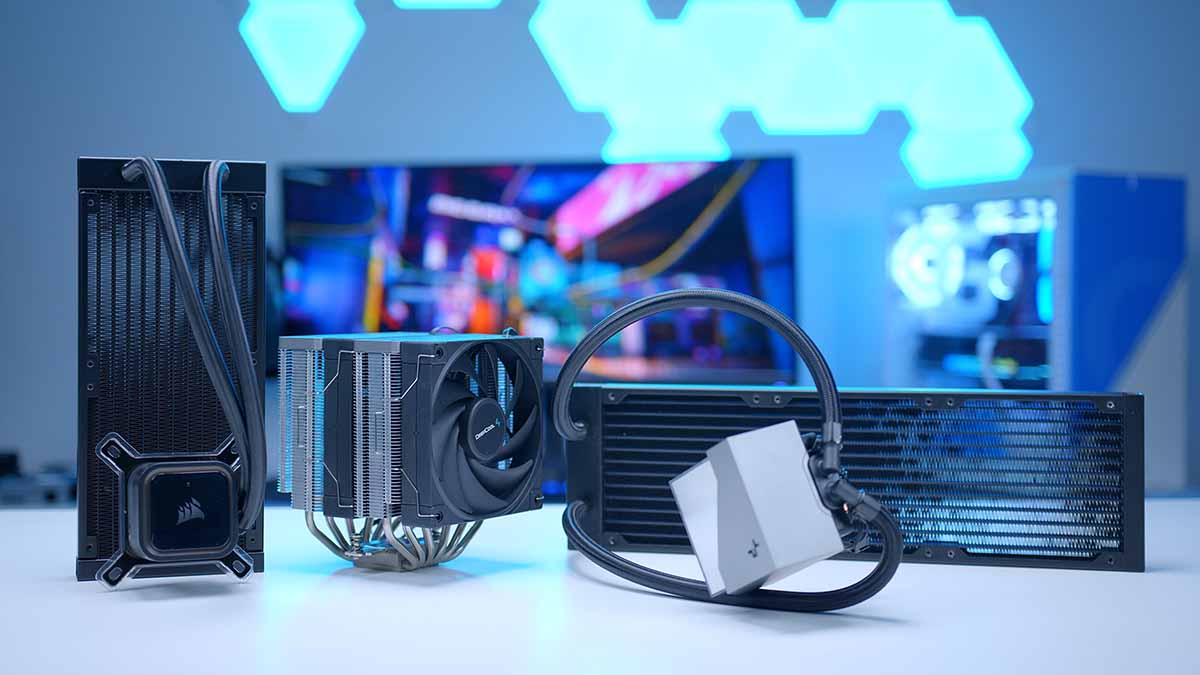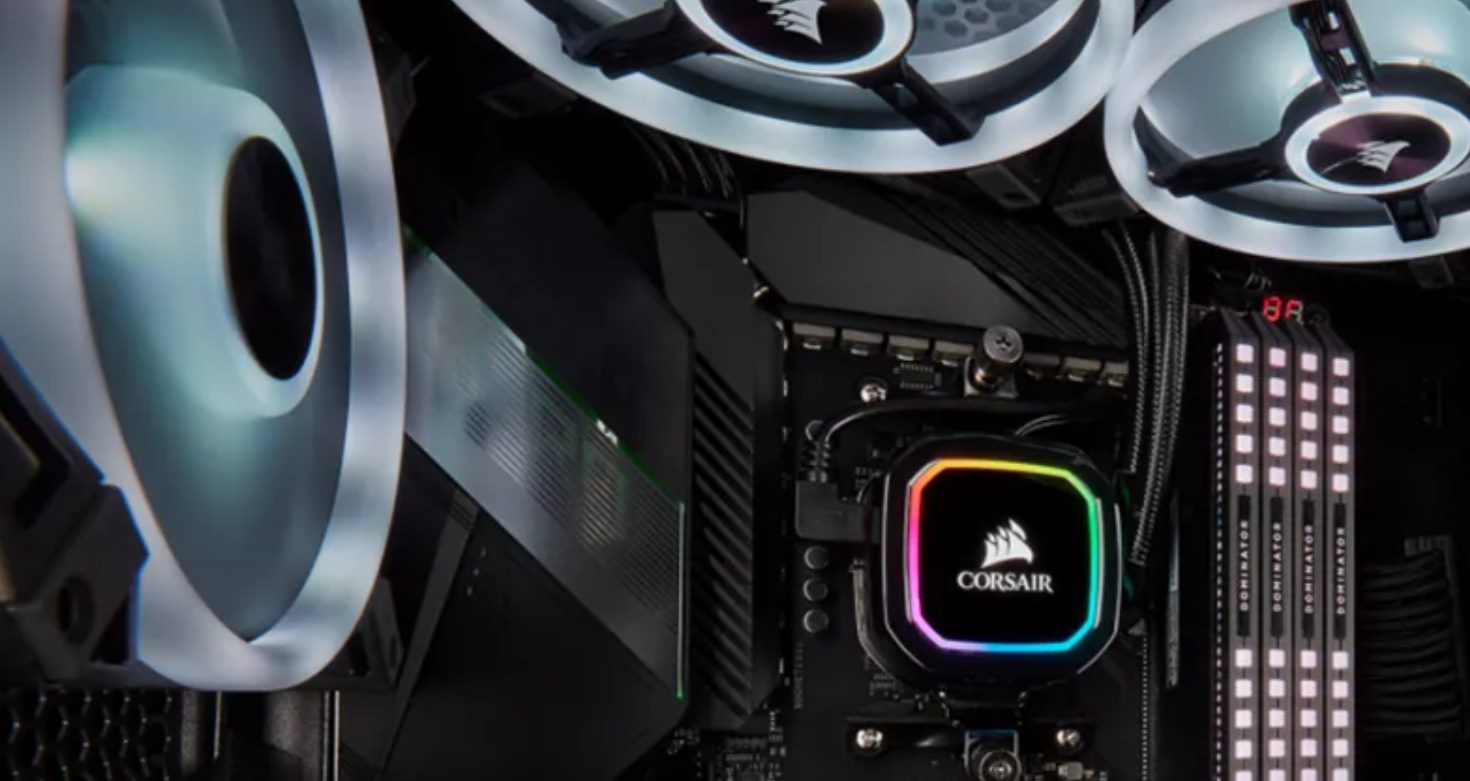Introduction
A liquid CPU cooler is an essential component for keeping your computer’s processor temperatures in check. As processors become more powerful, they generate more heat, which can lead to performance issues and even damage if not properly managed. Liquid cooling systems offer an efficient and effective solution by using liquid coolant to dissipate heat away from the CPU.
Unlike traditional air coolers that rely on heatsinks and fans, liquid CPU coolers employ a closed-loop system that consists of a water block, pump, radiator, and fan. The water block is attached to the CPU, absorbing the heat, and then transfers it to the radiator through tubes. The radiator, equipped with fans, cools down the liquid coolant before it is circulated back to the water block to repeat the process.
The popularity of liquid CPU coolers has risen in recent years due to their superior cooling capabilities and quieter operation compared to air coolers. However, like any electronic component, liquid CPU coolers have a finite lifespan and require proper care to ensure optimal performance and longevity.
In this article, we will explore the factors that can affect the lifespan of a liquid CPU cooler and discuss signs that may indicate it’s time for a replacement. We will also provide some tips on how to extend the lifespan of your liquid CPU cooler, helping you get the most out of this crucial component of your computer system.
What is a liquid CPU cooler?
A liquid CPU cooler, also known as a liquid cooling system or AIO (All-in-One) cooler, is a type of cooling solution designed to maintain optimal temperatures for your computer’s central processing unit (CPU). It is an alternative to traditional air cooling methods, offering improved thermal management and quieter operation.
Unlike air coolers, which rely on heatsinks and fans to dissipate heat, liquid CPU coolers utilize a closed-loop system that involves the circulation of liquid coolant to cool the CPU. The system typically consists of three main components: the water block, pump, and radiator.
The water block serves as the interface between the CPU and the cooling system. It is usually made of copper or other materials with high thermal conductivity, allowing efficient transfer of heat from the CPU to the liquid coolant. The water block is securely attached to the CPU using screws or brackets.
The pump, often integrated into the water block or placed next to it, is responsible for moving the liquid coolant through the system. It helps maintain a consistent flow rate to ensure efficient heat dissipation. Some liquid CPU coolers feature advanced pumps with customizable settings, allowing users to adjust the pump speed and optimize cooling performance.
The radiator is a heat exchanger that facilitates the transfer of heat from the liquid coolant to the surrounding air. It is composed of thin metal fins and tubes, usually made of aluminum, and is often equipped with one or more fans to enhance cooling efficiency. As the liquid coolant passes through the radiator, the heat is dissipated into the air, effectively cooling down the coolant before it is circulated back to the CPU.
Overall, liquid CPU coolers offer several advantages over traditional air cooling solutions. They can handle higher heat loads, providing better thermal performance and enabling overclocking for maximum processor performance. Liquid coolers are also typically quieter, as they do not rely on high-speed fans to maintain temperatures. Additionally, the compact design of AIO coolers makes them compatible with a wide range of computer cases, including smaller ones with limited space.
In the following sections, we will delve into the factors that can influence the lifespan of a liquid CPU cooler and explore how to identify signs of its potential deterioration.
Factors that affect the lifespan of a liquid CPU cooler
The lifespan of a liquid CPU cooler can vary depending on several factors. Understanding these factors can help you determine how long your cooler is likely to last and take appropriate steps to ensure its longevity. Here are some key factors that can impact the lifespan of a liquid CPU cooler:
1. Build quality and materials: The quality of the components used in the construction of the cooler can greatly influence its lifespan. Coolers made with high-quality materials, such as durable metals and reliable pumps, tend to last longer compared to cheaper alternatives.
2. Maintenance and cleaning: Regular maintenance and cleaning are crucial for extending the lifespan of a liquid CPU cooler. Dust and debris can accumulate on the radiator and fans, obstructing airflow and reducing cooling efficiency. It is recommended to clean the cooler periodically by removing dust and ensuring unobstructed airflow.
3. Operating conditions: The operating conditions in which the liquid CPU cooler is used can affect its lifespan. Factors such as ambient temperature, humidity levels, and exposure to excessive dust or moisture can impact the cooler’s performance and durability. Stabilizing the operating conditions within manufacturer-recommended ranges can help prolong its lifespan.
4. Overclocking and workload: Overclocking pushes the CPU to operate at higher frequencies, generating more heat. If you frequently overclock your CPU or subject it to heavy workloads for extended periods, it can put additional strain on the liquid CPU cooler. This increased workload can affect the cooler’s overall lifespan.
5. Manufacturer design and specifications: The design and specifications set by the manufacturer play a crucial role in determining the lifespan of a liquid CPU cooler. Coolers with better engineering and robust designs are likely to have longer lifespans compared to those with subpar designs or inferior specifications.
It’s important to note that the lifespan of a liquid CPU cooler is not set in stone and can vary depending on these factors. While some coolers may last for several years without any issues, others may require replacement sooner. Regular monitoring, maintenance, and adherence to proper usage guidelines can help ensure optimal lifespan and performance for your liquid CPU cooler.
Pump Lifespan
The pump is a critical component of a liquid CPU cooler, responsible for circulating the coolant throughout the system. The lifespan of the pump can vary depending on several factors, including its build quality, usage, and maintenance. Understanding the factors that can affect the pump’s lifespan is important for ensuring optimal performance and longevity. Here are key considerations regarding the pump lifespan:
Build quality: The quality of the pump construction plays a significant role in its lifespan. Coolers with well-built pumps made from durable materials tend to have a longer lifespan compared to those with lower-quality pumps. It’s essential to choose a liquid CPU cooler from reputable manufacturers known for their quality components.
Usage and workload: The workload placed on the pump can impact its lifespan. If you frequently run demanding tasks or overclock your CPU, it increases the load on the pump and may lead to more wear and tear. Pumps designed to handle high workloads or equipped with adjustable speed settings may have longer lifespans.
Maintenance: Regular maintenance can help extend the lifespan of the pump. Over time, air bubbles or debris can accumulate in the pump, affecting its performance. It’s recommended to periodically check for any build-up, flush the system if necessary, and ensure proper coolant levels. Following the manufacturer’s maintenance guidelines is crucial to keep the pump functioning optimally.
Operating conditions: The operating conditions, such as temperature and humidity, can impact the pump’s lifespan. High temperatures or excessive moisture can lead to faster degradation of the pump. Ensure that the liquid CPU cooler is operated within the recommended temperature range specified by the manufacturer to prevent unnecessary strain on the pump.
Manufacturer specifications: Each liquid CPU cooler has its specific pump lifespan estimated by the manufacturer. Checking the manufacturer’s specifications can give you an idea of the expected lifespan of the pump. Some manufacturers may indicate the estimated lifetime in hours, while others may provide an average lifespan in years. It’s important to consider this information when assessing the longevity of the pump.
It’s worth noting that pump failure is relatively rare in well-maintained liquid CPU coolers. However, if you notice any signs of pump failure, such as decreased cooling performance, unusual noises, or leaks, it may indicate that the pump needs to be replaced. It’s recommended to consult the manufacturer’s support or seek professional assistance for pump replacements.
By understanding the factors that affect the pump’s lifespan and taking proactive measures in maintenance and proper usage, you can ensure the longevity and optimal performance of your liquid CPU cooler.
Radiator Lifespan
The radiator is a crucial component of a liquid CPU cooler, responsible for dissipating heat from the liquid coolant. Over time, factors such as build quality, maintenance, and operating conditions can affect the lifespan of the radiator. Understanding these factors is essential for maintaining an efficient and long-lasting liquid CPU cooler. Here are key considerations regarding the radiator lifespan:
Build quality: The build quality of the radiator greatly impacts its lifespan. Radiators made from high-quality materials, such as aluminum or copper, are more durable and less susceptible to corrosion. Opting for liquid CPU coolers from reputable manufacturers known for using quality materials can help ensure a longer radiator lifespan.
Maintenance: Regular maintenance is crucial for prolonging the radiator’s lifespan. Dust and debris can accumulate on the radiator fins, obstructing airflow and reducing cooling efficiency. It is recommended to periodically clean the radiator, either by using compressed air or gently brushing away the debris. This helps maintain optimal airflow and prevents issues that can shorten the radiator’s lifespan.
Operating conditions: The operating conditions in which the liquid CPU cooler is used can impact the radiator’s lifespan. If the cooler is exposed to high ambient temperatures or excessive humidity, it can accelerate corrosion and degradation of the radiator. Keeping the operating conditions within the manufacturer’s specified ranges helps ensure the longevity of the radiator.
Coolant quality: The quality and composition of the coolant used in the liquid CPU cooler can also play a role in the radiator’s lifespan. Low-quality or improperly mixed coolants can lead to corrosion and clogging within the radiator, reducing its lifespan. It is important to use compatible and high-quality coolant and follow the manufacturer’s recommendations for coolant maintenance.
Manufacturer specifications: Manufacturers typically provide estimates for the average lifespan of their radiators. This information can offer insights into the expected durability of the radiator. It can be indicated in terms of operating hours or years, giving users an idea of how long the radiator is likely to last under normal usage conditions.
It is important to note that radiator failure is relatively rare if proper maintenance and usage guidelines are followed. However, signs such as decreased cooling efficiency, leaks, or unusual noises should not be ignored, as they may indicate issues with the radiator. In such cases, it is advisable to consult the manufacturer’s support or seek professional assistance for radiator replacement.
By understanding the factors that affect the radiator’s lifespan and implementing regular maintenance practices, you can maximize the longevity and effectiveness of your liquid CPU cooler’s radiator.
Fan Lifespan
The fan in a liquid CPU cooler plays a crucial role in facilitating airflow and dissipating heat from the radiator. The lifespan of the fan can be influenced by various factors, including build quality, usage, and maintenance. Understanding these factors is vital for ensuring optimal performance and longevity. Here are key considerations regarding the fan lifespan:
Build quality: The build quality of the fan affects its lifespan. Fans made with high-quality components and durable materials tend to have a longer lifespan compared to lower-quality alternatives. When purchasing a liquid CPU cooler, selecting a reputable brand known for producing reliable fans can help ensure their durability.
Usage and workload: The workload and usage pattern of the fan can impact its lifespan. If you frequently run resource-intensive tasks or keep the CPU under heavy load for extended periods, it may put additional strain on the fan. Over time, this increased workload can contribute to wear and tear, potentially reducing the fan’s lifespan. Selecting fans designed for high-performance or with adjustable speed settings can help extend their lifespan under heavy usage.
Maintenance: Regular maintenance is crucial for extending the lifespan of the fan. Accumulated dust and debris can hinder airflow and cause the fan to work harder, increasing the risk of premature wear. Periodically cleaning the fan blades and ensuring unobstructed airflow through the radiator can help maintain optimal cooling performance and prolong the fan’s lifespan.
Operating conditions: The operating conditions, such as ambient temperature and humidity levels, can affect the fan’s lifespan. Exposure to high temperatures or excessive moisture can lead to faster degradation of the fan. Operating the liquid CPU cooler within the recommended temperature range specified by the manufacturer can help preserve the fan’s efficiency and durability.
Manufacturer specifications: Manufacturers often provide specifications regarding the fan’s lifespan. The estimated lifespan can vary based on factors such as fan speed, load, and design. Checking the manufacturer’s specifications can give you an idea of the expected longevity of the fan. Keep in mind that these estimates are typically based on average usage and may vary depending on individual operating conditions.
While fans are generally robust and long-lasting, there may be times when they need to be replaced. Signs of fan degradation include increased noise, reduced airflow, or complete failure. If you notice any of these signs, it may be time to replace the fan. Consult the manufacturer’s support or seek professional assistance to ensure proper fan replacement.
By considering factors such as build quality, proper usage, regular maintenance, and adherence to operating limitations, you can help maximize the lifespan and performance of the fans in your liquid CPU cooler.
Performance and Lifespan Degradation
Over time, the performance of a liquid CPU cooler can gradually degrade, which can also impact its overall lifespan. Several factors contribute to this degradation, including wear and tear, component aging, and changes in the thermal conductivity of materials. Understanding the performance and lifespan degradation of a liquid CPU cooler can help you identify potential issues and take appropriate measures. Here are some key considerations:
1. Thermal conductivity: The thermal conductivity of certain materials used in liquid CPU coolers, such as coolant and thermal paste, may decrease over time. This can lead to reduced heat transfer efficiency and increased temperatures. Routine replacement of thermal paste and coolant, as recommended by the manufacturer, can help maintain optimal thermal conductivity and prevent performance degradation.
2. Pump efficiency: A pump’s efficiency can decrease over time due to factors like mechanical wear, bearing degradation, or impeller erosion. As the pump’s efficiency decreases, the coolant circulation may become less effective, compromising cooling performance. Monitoring the pump’s noise, flow rate, and overall effectiveness can help identify potential issues with pump efficiency and prompt for necessary maintenance or replacement.
3. Fan performance: Fans in a liquid CPU cooler can experience wear on the bearings, leading to reduced rotation speeds or increased noise levels. If the fans become less efficient, they may struggle to provide adequate airflow and cooling. Regular inspection and cleaning of the fans, as well as replacement if necessary, can help maintain their performance and prevent potential overheating issues.
4. Coolant evaporation: Over time, the liquid coolant within the CPU cooler can evaporate, reducing its effectiveness in dissipating heat. As the coolant levels drop, the cooling capacity of the system diminishes, resulting in higher temperatures. Regular monitoring of coolant levels and timely refilling or replacing the coolant can help prevent performance degradation caused by coolant evaporation.
5. Dust and debris: Accumulation of dust and debris on the radiator, fan blades, and other components can impede airflow and hinder cooling efficiency. Regular cleaning and maintenance, such as removing debris and ensuring unobstructed airflow, can help prevent performance degradation caused by dust buildup.
6. Component aging: Over time, all electronic components experience aging, which can contribute to performance degradation. This can include reduced efficiency of electronic circuits, increased resistance in wiring, or deteriorating solder joints. While component aging is a natural process, proper maintenance and timely replacement of aging components can help ensure the continued performance and lifespan of the liquid CPU cooler.
Regular monitoring of temperatures, performance benchmarks, and system stability can help detect potential performance and lifespan degradation in a liquid CPU cooler. If you notice consistent increases in CPU temperatures, decreased cooling efficiency, unusual noises, or other signs of degradation, it may be indicative of the need for maintenance or replacement. Consulting the manufacturer’s guidelines or seeking professional assistance can aid in addressing any performance or lifespan degradation concerns effectively.
Signs that your liquid CPU cooler may need to be replaced
A well-functioning liquid CPU cooler is essential for maintaining optimal temperatures and performance in your computer system. However, over time, wear and tear or other issues can arise, indicating the need for a replacement. Recognizing the signs that your liquid CPU cooler may need to be replaced can prevent potential damage to your system. Here are some key indicators to watch out for:
1. Increased CPU temperatures: If you notice a consistent rise in CPU temperatures during normal usage or under heavy workloads, it could be a sign that your liquid CPU cooler is no longer effectively dissipating heat. Inadequate cooling can result in reduced CPU performance, stability issues, or even thermal throttling.
2. Loud or unusual noises: Unusual noises coming from your liquid CPU cooler, such as rattling, grinding, or excessive fan noise, could indicate fan or pump issues. These noises may suggest bearing failure, loose components, or an imminent failure. Any significant change in fan or pump noise should be taken seriously and investigated promptly.
3. Leakage or moisture: Liquid CPU coolers consist of tubes and fittings that carry the coolant. If you notice any signs of leakage, moisture build-up, or visible damage to the cooler, it is crucial to replace it immediately. Coolant leaks can lead to irreversible damage to other components in your system and pose a significant risk of electrical shorts.
4. Reduced cooling performance: A noticeable decline in cooling performance, even after proper cleaning and maintenance, could indicate wear or degradation of components within the liquid CPU cooler. The radiator, fans, or pump may not be operating at their optimal levels, resulting in reduced cooling efficiency.
5. Frequent system crashes or instability: If your system regularly crashes or experiences instability, it could be due to overheating caused by an ineffective liquid CPU cooler. Thermal issues can cause the CPU to throttle its performance or trigger protective measures like system shutdowns to prevent damage.
6. Age and limited manufacturer support: Liquid CPU coolers, like any hardware, have a finite lifespan. If your cooler is significantly aged and no longer supported by the manufacturer, it may be more prone to failures or lack compatibility with newer systems. In such cases, it may be wise to consider a replacement to ensure ongoing performance and support.
It is important to note that these signs do not necessarily indicate an immediate need for replacement in all situations. Sometimes, they can be addressed through troubleshooting, maintenance, or minor component replacements. However, if you notice persistent and severe issues with your liquid CPU cooler, considering a replacement might be the most effective solution to prevent further damage or performance degradation.
Before replacing your liquid CPU cooler, it is advisable to consult the manufacturer’s support or seek professional assistance to confirm the need for a replacement and ensure compatibility with your system. Upgrading to a newer and more efficient model can provide improved cooling performance, longevity, and compatibility with the latest hardware.
Tips to extend the lifespan of your liquid CPU cooler
A liquid CPU cooler is a significant investment for your computer system, and you want to ensure that it performs optimally and has a long lifespan. Here are some valuable tips to help you extend the lifespan of your liquid CPU cooler:
1. Regular maintenance: Perform regular maintenance on your liquid CPU cooler to keep it in optimal condition. This includes cleaning the radiator and fans to remove dust and debris that can obstruct airflow and reduce cooling efficiency. Follow the manufacturer’s guidelines for maintenance procedures and recommended cleaning solutions.
2. Monitor temperatures: Keep an eye on CPU temperatures to detect any potential issues early on. Use software utilities or hardware monitoring tools to monitor temperature readings and ensure they stay within safe operating ranges. High temperatures indicate inadequate cooling and can lead to reduced performance and possible damage to your CPU.
3. Replace thermal paste: Over time, the thermal paste between the CPU and water block can dry out or degrade, compromising heat transfer efficiency. Consider replacing the thermal paste periodically, following the manufacturer’s recommendations. This will help ensure optimal thermal conductivity and maintain proper cooling performance.
4. Check for leaks: Regularly inspect your liquid CPU cooler for any signs of leakage, such as moisture buildup or visible damage. Leaks can cause serious damage to other components in your system, so immediate action is necessary if a leak is detected. If you spot any leaks, consider replacing the cooler to prevent further issues.
5. Maintain proper airflow: Ensure that your computer case has sufficient airflow to keep the liquid CPU cooler running efficiently. Proper cable management and positioning of the cooler and case fans can improve airflow and prevent hotspots. Avoid obstructing the radiator or fans with cables or objects inside the case.
6. Avoid overclocking or high workloads: Overclocking your CPU or subjecting it to heavy workloads for prolonged periods can put additional stress on the liquid CPU cooler. Excessive heat generated during overclocking or intense workloads can shorten the cooler’s lifespan. Consider using conservative overclocking settings or lower workloads to reduce strain on the cooler.
7. Keep your system clean: Beyond the liquid CPU cooler, keeping your entire system clean is crucial for overall performance and longevity. Regularly clean dust and debris from all components, including the motherboard, GPU, and power supply. A clean system ensures efficient heat dissipation and reduces strain on the cooler.
8. Monitor pump performance: Keep an eye on the pump performance, including the flow rate and any unusual noises. Monitor the pump speed and check for any changes that might indicate pump degradation or failure. Address any pump issues promptly by contacting the manufacturer or seeking professional assistance.
9. Replace fans if necessary: Over time, fans can wear out or become less efficient. If you notice significant changes in fan performance, such as increased noise or decreased airflow, consider replacing them. Upgrading to higher-quality fans can improve cooling performance and extend the lifespan of your liquid CPU cooler.
By following these tips, you can help extend the lifespan of your liquid CPU cooler and maintain optimal cooling performance for your computer system. Regular maintenance, proper airflow, and monitoring temperatures are key to ensuring that your cooler operates effectively and protects your CPU from overheating. Prioritize the cleanliness and maintenance of your entire system to maximize the longevity of your liquid CPU cooler.
Conclusion
A liquid CPU cooler is a crucial component for maintaining optimal temperatures and performance in your computer system. By understanding the factors that affect its lifespan and implementing proper maintenance practices, you can maximize its longevity and efficiency.
We explored the various factors that can impact the lifespan of a liquid CPU cooler, including the build quality of the components, regular maintenance, operating conditions, and workload. These factors, along with the quality of the coolant and the manufacturer’s specifications, play a significant role in determining how long your cooler will last.
Recognizing the signs that your liquid CPU cooler may need to be replaced is vital to avoid potential damage to your system. Increased CPU temperatures, unusual noises, leakage, reduced cooling performance, frequent system crashes, and the age of the cooler are all indicators that it may be time for a replacement.
To extend the lifespan of your liquid CPU cooler, regular maintenance is crucial. This includes cleaning the radiator and fans to ensure optimal airflow, monitoring temperatures to spot any abnormal readings, replacing thermal paste periodically, and checking for leaks. Maintaining proper airflow in your system, avoiding high workloads or excessive overclocking, and keeping your overall system clean are also important steps to maintain the longevity of your cooler.
Remember to consult the manufacturer’s guidelines and seek professional assistance when necessary. Upgrading to a newer liquid CPU cooler may be beneficial if your current one is outdated or no longer supported.
By following these tips and being proactive in monitoring and maintaining your liquid CPU cooler, you can ensure that it performs optimally and has a long lifespan, providing you with reliable cooling for your computer system.







